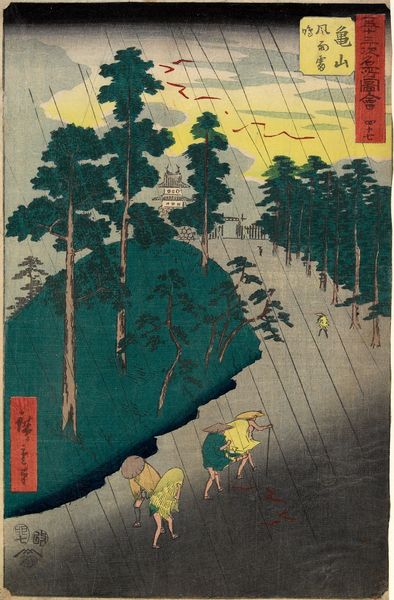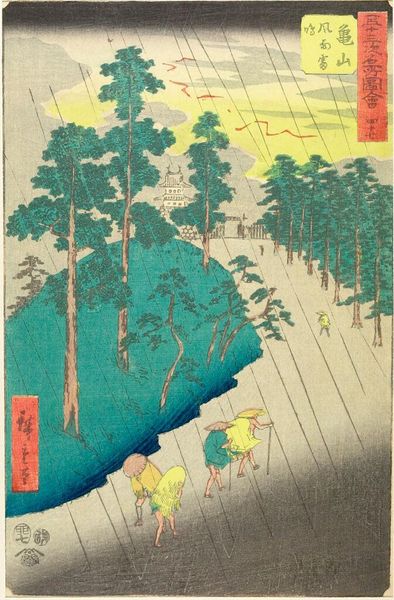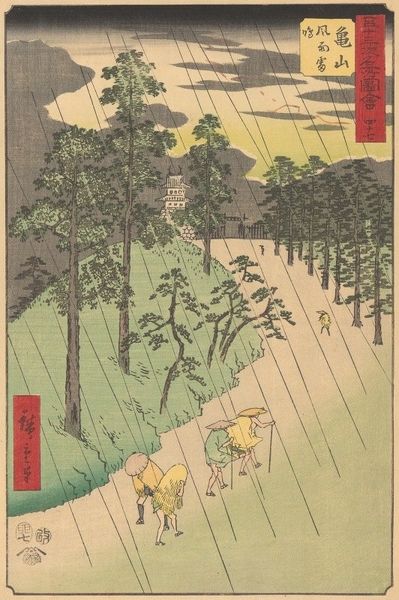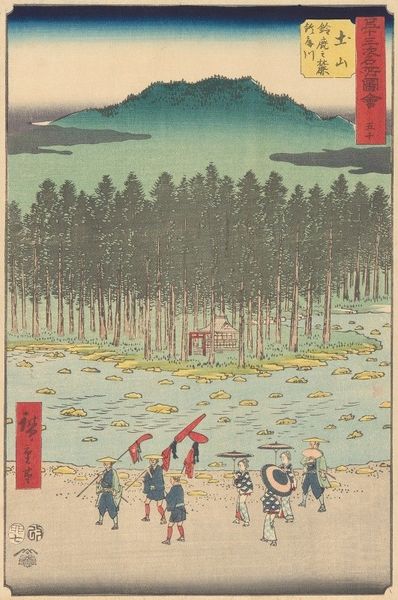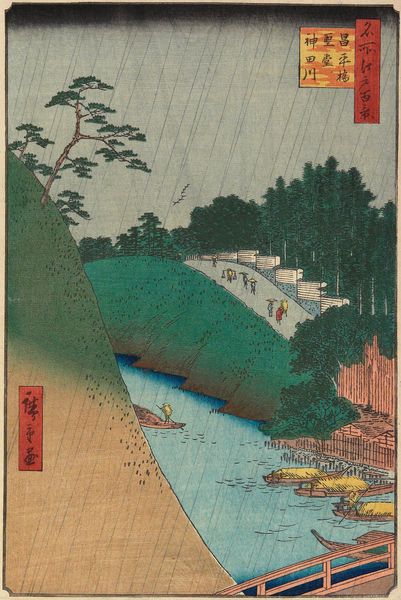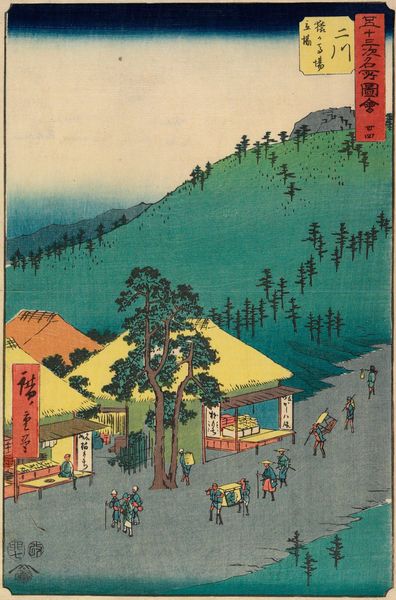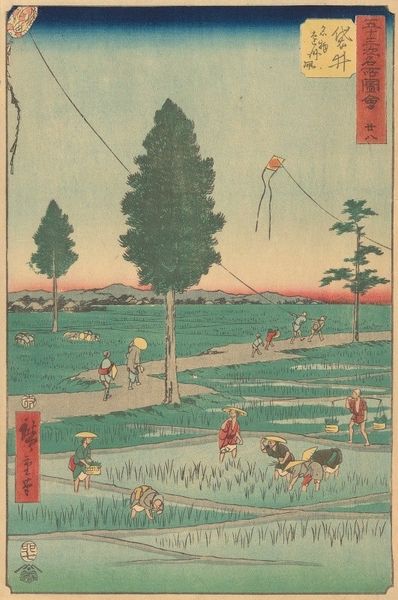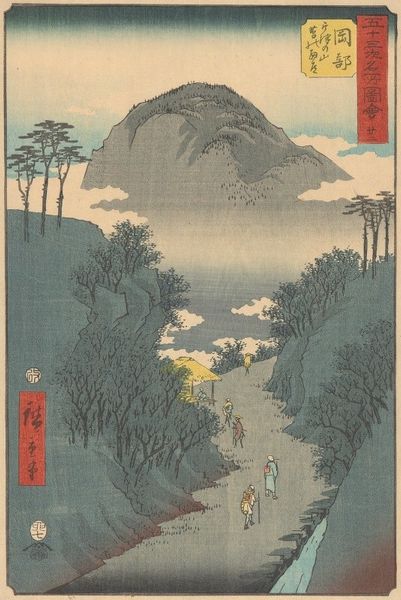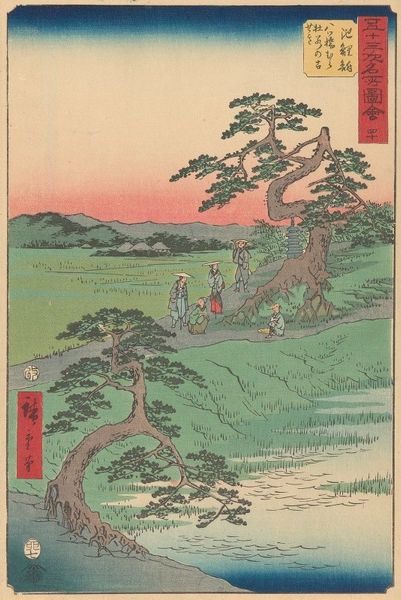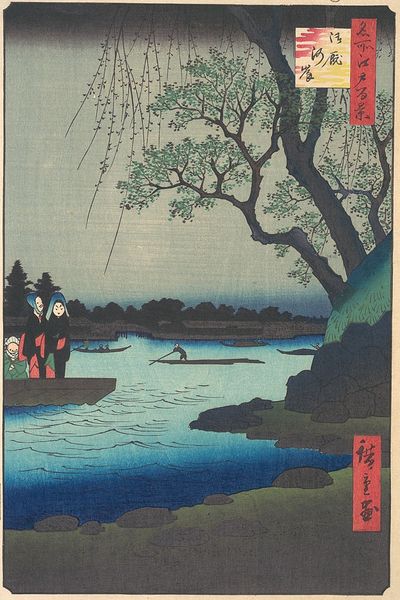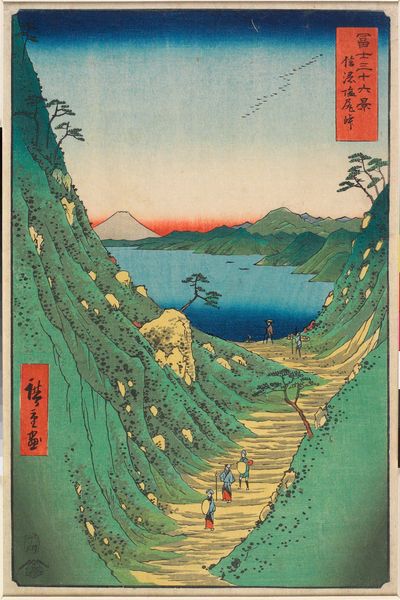
print, ink, woodblock-print
# print
#
asian-art
#
landscape
#
ukiyo-e
#
figuration
#
ink
#
coloured pencil
#
woodblock-print
#
line
Dimensions: 13 7/16 x 8 3/4 in. (34.1 x 22.3 cm) (image)14 1/2 x 9 13/16 in. (36.8 x 25 cm) (sheet)17 15/16 x 14 in. (45.5 x 35.5 cm) (mat)
Copyright: Public Domain
Editor: So, here we have "47," a woodblock print, possibly from the late 1850s, by Utagawa Hiroshige. The driving rain really stands out to me. What are some of the compositional elements you notice right away? Curator: Initially, the composition commands attention. Note the strategic use of diagonal lines formed by the rain. This, combined with the placement of the figures on the lower portion, masterfully enhances the feeling of depth within the pictorial space. Editor: It feels very immersive. The colors also seem deliberate. Curator: Precisely. Consider how the contrast of the dark, saturated blues and greens of the landscape offset the lighter tones of the sky and rain. This sharp chromatic contrast amplifies the emotional intensity of the depicted scene. Notice the line work, how would you define its effect on the image? Editor: The lines look incredibly clean, and I think that accentuates the shapes even with so much rain depicted. The artist is efficient with what they need to show us. Curator: Precisely, and how does the materiality inform this economy? Think of the woodblock print's impact on the linearity. What does that linearity evoke in terms of emotion? Editor: I hadn’t thought of it that way before, but now I see how the woodblock process simplifies shapes. This simplification contributes to both a dynamic yet also solemn feeling within the landscape. Thank you! Curator: Of course. Through the application of visual elements, we witness how the artwork resonates in its formal properties and materiality, creating meaning without specific reference to narrative or historical details.
Comments
No comments
Be the first to comment and join the conversation on the ultimate creative platform.
